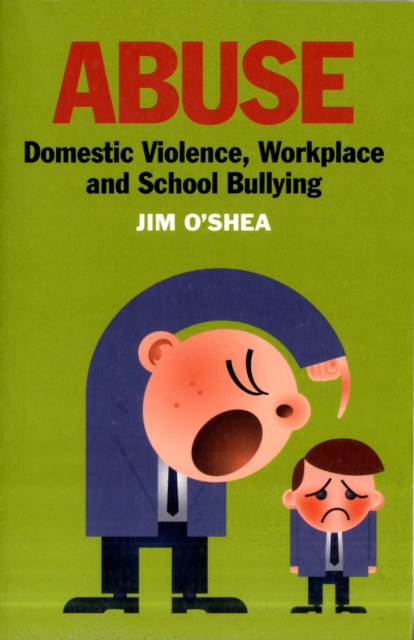
Abuse : Domestic Violence, Workplace and School Bullying Paperback / softback
by Jim O'Shea
Paperback / softback
Description
The book examines abuse (not clerical or institutional abuse).
It explores boundaries and how abuse is an invasion of boundaries.
It explores physical, emotional, verbal and financial abuse.
The book looks at the abusive personality type, and examines workplace and school bullying.
Child abuse is explored, and the issue of staying in or leaving an abusive environment.
The question of what happens if one leaves and if it is possible to change an abusive personality is examined.
A client's story is contained in the book and this gives a human aspect to the exploration. The majority of relationships are healthy, and abuse can never thrive in a healthy relationship.
Love is the basis of all healthy relationships. However, abuse is common and universal. It is perpetrated by both men and women. It is found in every social, cultural, economic and racial background.
Professionals, white-collar workers, religious leaders, well-educated people are just as likely to be abusive as any other. This book examines five types of abuse - physical, emotional/psychological/mental, verbal, sexual, and financial/economic. Generally, they will be explored in the context of intimate relationships. Bullying in the workplace, which can contain all of these types of abuse, is also explored.
The book will focus on adult victims and highlight the harrowing behaviours of abusers.
However, because of its importance, there is also a chapter on child abuse.
Abuse is driven by toxic shame and rage, and is engraved in the biology of the brain. It is also the offspring of childhood conditioning and can be a learned behaviour, underpinned by irrational thoughts, beliefs and values.
Driven by these, abusers use power and control to humiliate the victims, trample on their boundaries, and exert control over them.
Among other aspects, this book will explore how the abuser tries to control the victim's time, their material resources; controlling by body language and gestures, by confusing the victim and defining their reality, by blaming, and by reducing the victim's status through demeaning behaviours, violence, sexual control, or perhaps financial manipulation.
Information
-
Available to Order - This title is available to order, with delivery expected within 2 weeks
- Format:Paperback / softback
- Pages:222 pages
- Publisher:Cork University Press
- Publication Date:15/03/2011
- Category:
- ISBN:9781855942172
Other Formats
- EPUB from £6.74
Information
-
Available to Order - This title is available to order, with delivery expected within 2 weeks
- Format:Paperback / softback
- Pages:222 pages
- Publisher:Cork University Press
- Publication Date:15/03/2011
- Category:
- ISBN:9781855942172






